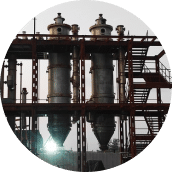
ంభం. మా వినియోగదారుల నమ్మకానికి ఎప్పుడూ ద్రోహం చేయకూడదనే మా నిబద్ధతను మేము నిలకడగా సమర్థించాము, మా వ్యవహారాలన్నింటిలోనూ పారదర్శకత మరియు నిజాయితీని నిర్ధారిస్తాము. అదనంగా, నాణ్యతకు ఎల్లప్పుడూ పరిమాణంపై ప్రాధాన్యత ఇవ్వబడుతుంది, అసాధారణమైన ప్రమాణాలు మరియు కస్టమర్ సంతృప్తికి హామీ ఇవ్వడానికి ఉత్పత్తి ప్రక్రియ యొక్క ప్రతి దశలో కఠినమైన నాణ్యత నియంత్రణ చర్యలు అమలు చేయబడతాయి.
మా బృందం
ఇది మార్కెట్లో నిలబడటానికి మరియు విస్తృత కస్టమర్ల స్థావరాన్ని సేకరించడానికి వీలు కల్పించిన మా జట్టు సభ్యుల వెనుక భాగం. అర్హత, అనుభవం, నైపుణ్యాలు మరియు జ్ఞానం ఆధారంగా, మేము మా జట్టు సభ్యులకు ఒక జట్టు మరియు నిర్దిష్ట హోదాను కేటాయించాము. మేము పరిపూర్ణతతో ప్రతి పనికి మమ్మల్ని ఎనేబుల్ మరియు కస్టమర్ల అంచనాలను మించిపోయే మా జట్టు సభ్యుల గురించి గర్వపడుతున్నాము. మేము మా ఉద్యోగులకు అవసరమైన శిక్షణా కార్యక్రమాలను కూడా అందిస్తాము, తద్వారా వారి నైపుణ్యాలను మెరుగుపరచవచ్చు మరియు వారు సంబంధిత డొమైన్లో ముందుకు ఉండగలరు.
మాకు ఎందుకు?
- మేము ఉత్తమ ముడి పదార్థం మరియు తాజా ఉత్పత్తి సాంకేతిక ఉపయోగించి వాటిని తయారీదారు మా ఉత్పత్తుల ప్రీమియం నాణ్యత హామీ.
- కొనుగోలుదారు యొక్క అంచనాలను మరియు వ్యాపార మా స్వభావాన్ని దృష్టిలో ఉంచుకుని రూపొందించబడిన సరసమైన విధానాలను మేము అభ్యసిస్తాము.
- మేము ఫిల్మ్ డ్రైయర్, మురుగునీటి ఆవిరైటర్లు, మెంబ్రేన్ బయోరియాక్టర్, లిక్విడ్ డిశ్చార్జ్ సిస్టమ్, లిక్విడ్ డిశ్చార్జ్ సిస్టమ్ మొదలైన వాటితో సహా మా ఉత్పత్తులకు సరసమైన ధరను వసూలు చేస్తాము, తద్వారా వినియోగదారులు ఆర్థికంగా దోపిడీకి గురవుతున్నారని
కేటగిరీలు
- బాష్పీభవన మొక్కలు
- మల్టిపుల్ ఎఫెక్ట్ ఆవిరిపోరేటర్లు
- మురుగునీటి ఆవిరిపోరేటర్లు
- కదిలిన సన్నని ఫిల్మ్ డ్రైయర్
- సున్నా ద్రవ ఉత్సర్గ వ్యవస్థ
- ఫోర్స్డ్ సర్క్యులేషన్ ఆవిరిపోరేటర్
- మెంబ్రేన్ బయోఇయాక్టర్
- పారిశ్రామిక ఆవిరిపోరేటర్లు
- Wastewater Treatment Plants
- Wastewater Treatment Plants
- Wastewater Treatment Plants
- Industrial Evaporators
- Industrial Evaporators
- Industrial Evaporators
- Wastewater Treatment Plants
- Industrial Dryers
- Industrial Dryers
- Industrial Evaporators
- Industrial Evaporators
- Industrial Evaporators
About Us
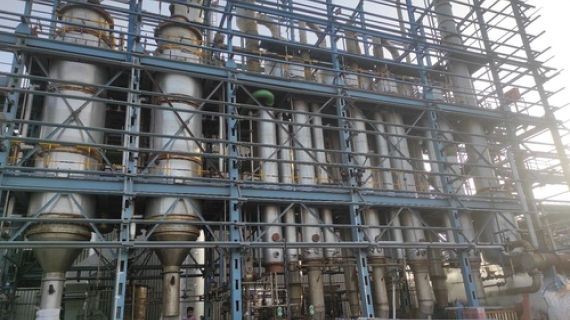
Wastewater Evaporator System manufacturer in India
వస్తువు యొక్క వివరాలు:
- ఫంక్షన్ zero liquid discharge
- ఉత్పత్తి రకం Multi Effect Evaporation System
- అప్లికేషన్ ZLD
- మరింత వీక్షించడానికి క్లిక్ చేయండి
ధర మరియు పరిమాణం
- 1
ఉత్పత్తి లక్షణాలు
- zero liquid discharge
- Multi Effect Evaporation System
- ZLD
వాణిజ్య సమాచారం
- నెలకు
- డేస్
- Yes
ఉత్పత్తి వివరణ
A wastewater evaporator extracts water from water-based waste by converting it into vapor, thereby separating contaminants. Its primary purpose is to minimize the volume of waste materials.The management of wastewater is a regulated and meticulously controlled process. Manufacturers of wastewater evaporators collaborate closely with governmental agencies to facilitate the safe removal of hazardous industrial waste.
A wastewater evaporator utilizes thermodynamics and mass transfer principles to eliminate water from waste materials. Thermodynamic evaporation involves heating the waste material sufficiently to vaporize water using various fuel sources.
Once water vaporizes, it is transferred as droplets via a blower without filtration.
Wastewater evaporation is an effective method for concentrating liquid waste and removing contaminants such as salts, heavy metals, and hazardous materials. Compared to solar evaporation ponds, which occupy large land areas and work slowly, wastewater evaporators are significantly more efficient.
Types of Wastewater Evaporation
Boiler Blow Off Evaporator, Boiling Water in a Tank, Heat Exchanger Evaporator, Liquid Thermal Oxidation, Steam Tube Evaporator, Vacuum Wastewater Evaporator
Feed
Wastewater is introduced into the treatment tank from a holding tank in the required quantity.
Feed Pump
The wastewater feed pump transfers wastewater into the wastewater evaporator, operating either manually with a toggle switch or automatically through an autofill system.
Heat
The wastewater evaporation process relies on heated steam generated by a heat exchanger, enhancing vaporization and concentration. Heat within the evaporator creates a uniform boil across the solution's surface.As the temperature reaches optimal levels for waste concentration, the evaporator prompts the need for emptying.
Blower
The blower in a wastewater evaporator draws air into the evaporator tank to eliminate water vapors and aid in the heating process. In the unit below, the blower compartment is visible in the lower right corner.
Compressor
Compressors play a crucial role in the vaporization process and can be categorized as positive displacement, centrifugal, or axial. Wastewater evaporators equipped with a compressor require an external steam source, such as a boileror heater in the feed tank.
Mist Eliminator
The mist eliminator, also known as a mist pad, removes contaminants from the process, which may include oils or other substances. Constructed from corrosion-resistant materials, these eliminators can be designed to be self-cleaning for enhanced efficiency.
Heat Production in a Wastewater Evaporator
Gas
The burner ignites within the combustion chamber, directing hot gases through a chimney into the evaporator tank. This process heats the wastewater to its boiling point.
Electric
Electrically powered units feature a heat exchanger located within the wastewater evaporator tank to generate heat for the wastewater.
Oil
Wastewater evaporators powered by oil operate similarly to gas models but use oil as their fuel source. The oil combusts within a combustion chamber, then travels through tubes in the heat exchanger before entering the chimney, where it mixes with air to heat the evaporation tank.
Steam
Steam heats the coils of the heat exchanger. Upon condensation, heat transfers to the wastewater and is discharged, releasing vapors through the mist eliminator.
Uses for Wastewater Evaporators
Food industry
Wastewater evaporators find numerous applications in the food industry. While wastewater from food production is non-toxic and biodegradable, it does contain biochemical oxygen demand (BOD) and solids from various processed foods. Activities like vegetable washing and animal slaughter introduce dissolved organic materials that must be eliminated from water before it can be reused or discharged.
Pharmaceutical
The pharmaceutical industry demands clean water as chemists require pure water for drug manufacturing processes. Regulatory agencies establish stringent purity standards for water used in drug production. Contaminants generated during pharmaceutical manufacturing are hazardous and pose risks, underscoring the necessity of wastewater evaporation equipment.
Paint Production
Water plays a crucial role in paint manufacturing, used in both water-based paints and for cooling ball mills in oil-based paint production. Wastewater from paint production typically contains elevated levels of alkaline substances from cleaning processes and cooling towers. Although the volume of wastewater from paint production is small, it is highly concentrated with pollutants.
Benefits of Wastewater Evaporators
Energy Efficiency:Wastewater evaporators operate on a 1:1 ratio, meaning the energy used to extract water equals the water extracted. Efficiency can be further enhanced by employing multiple effects, such as utilizing steam from one operation for another.
Zero Liquid Discharge:Stringent regulations at national, state, and local levels necessitate minimal industrial wastewater discharge. Wastewater evaporators can achieve zero liquid discharge, exceeding regulatory requirements.
Total Dissolved Solids (TDS):Wastewater processed by evaporators typically yields TDS levels below 10 mg/L, often as low as 2 mg/L. This purity allows the treated water to be reused in manufacturing processes.
Cost Effectiveness:Compared to chemical precipitation systems processing 395 liters per minute (L/m), wastewater evaporators are more efficient at 190 L/m, offering significant cost savings.
Flexibility:Wastewater evaporators are adaptable to diverse industry needs and wastewater conditions. They can be customized to handle various contaminants effectively.
Volume Reduction:A key advantage of wastewater evaporators is their capability to drastically reduce waste volume by removing moisture from materials. This addresses challenges in waste management by minimizing required disposal space.
Integration:Wastewater evaporators can operate independently or integrate seamlessly into existing systems, enhancing operational efficiency and reducing costs in wastewater disposal processes.

Price: Â
- 50
- 100
- 200
- 250
- 500
- 1000+
మురుగునీటి ఆవిరిపోరేటర్లు లో ఇతర ఉత్పత్తులు



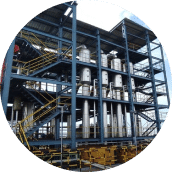
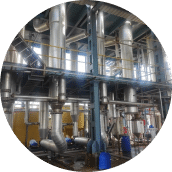
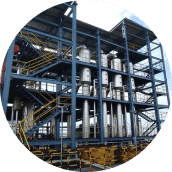



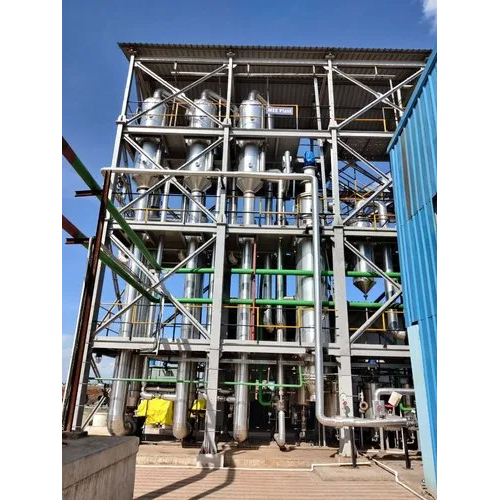
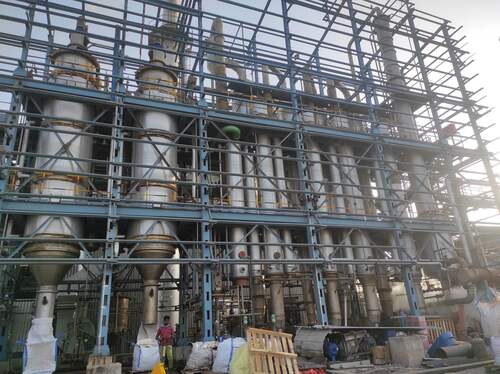
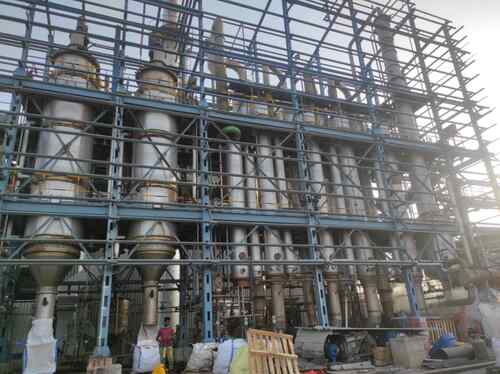

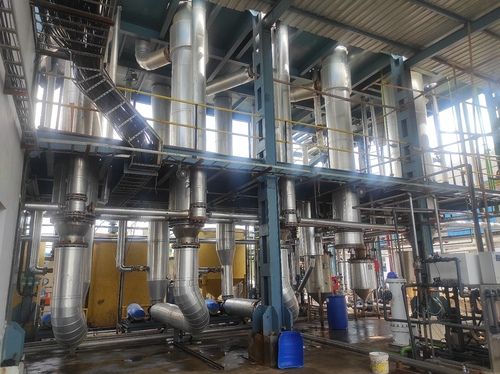
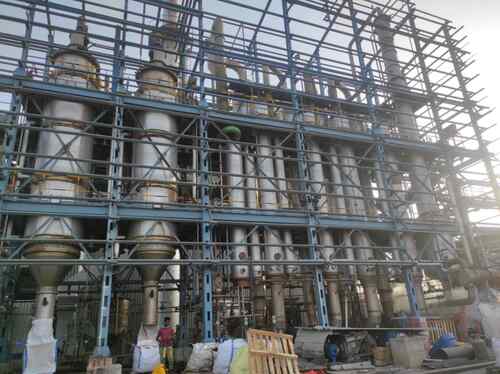

 English
English Spanish
Spanish French
French German
German Italian
Italian Chinese (Simplified)
Chinese (Simplified) Japanese
Japanese Korean
Korean Arabic
Arabic Portuguese
Portuguese